2021 Home Security/Home Automation Re-Design [ Part 1 of 3 ]
I’ve been an ADT customer for almost 20 years. When we moved to Florida in 2001, our house already had a hard-wired alarm system put in by the previous owners so subscribing to ADT’s monitoring service was one of the first “utilities” we set up (along with the normal electric, water/sewer, and TV/internet). Over the past two decades we’d added more sensors/zones, switched from the old copper landline to cellular connection, and of course the big upgrade to Pulse back in 2011 that started my interest in home automation.
Unfortunately, the past few years have seen constant rate increases for ADT’s already expensive monitoring service, with little updates or new services being added to Pulse to justify the expense (rumor has it they are also pushing customers away from Pulse to Control). Additionally, we’d been experiencing an increase in false alarms being triggered by window sensors (ADT support: maybe the wind shook your window? Me: I live in Florida and have hurricane rated impact windows, the wind is not shaking my windows), always seemingly in the middle of the night and even with fresh batteries in the sensors. Finally, earlier this year ADT experienced a two-week outage of their Alexa skill, during which I made several calls to support speaking with clueless representatives who wanted to send a technician to my house! This was the last straw. I decided I was done wasting my time (and money) with ADT and it was time to look at new options.
As you can tell by the title of this post, I chose the Ring Alarm security system.
I won’t go into a comparison of other solutions, but I did look at DIY systems like Ring and Simplisafe, along with more traditional/hybrid services like Alarm.com, Vivint, and even re-using my existing hard-wired components with the EyezOn EnvisaLink. In the end, I went with Ring which had a slightly higher up-front hardware cost, but lower monthly service cost. None of the solutions I looked at were an exact 100% replacement for what I had set up with ADT and Pulse, so I ended up splitting the home security and home automation into two separate projects. At first I wasn’t sure that having two separate systems was going to work exactly the way I wanted it to, but the end result turned out to work really well (more on that in part 2 and part 3).
Setup
For my initial proof-of-concept, I started with the 14-piece Ring Alarm starter kit. There are smaller kits, but I wanted to closely mirror the current ADT setup with multiple keypads and several windows and doors. I also didn’t bother with any Ring video products (like their doorbells) or CO/smoke detectors since I already have that covered by my Nest products.
The initial setup was relatively straightforward: create your Ring account, power up the base station, connect it to your home network, then pair the accessories (sensors, keypads, etc.). Ring accessories use Z-Wave, the same wireless technology I’ve been using with Pulse to control my lights for the past decade, so I’m no stranger to it, but pairing a Ring device to the base station is a little different (a process called SmartStart, which is apparently a new feature in Z-Wave S2). Adding sensors is done through the mobile app: you click “Set up a Device,” choose the device type (sensor, keypad, smoke detector, etc.), and the app walks you through the pairing process. First you use your phone’s camera to scan the QR code on the accessory, which tells the base station which specific device to look for. Then you pull out the plastic tab covering the battery connections so the device powers up and then pairs with the base station. Once that’s done, the app walks you through mounting the sensor, naming it, and testing it. Rinse and repeat for all of your additional devices.
- app dashboard
- add a new device
- device details
Base Station
The base station is square and slightly bigger than your average home router. It has both wireless and wired ethernet and also contains a battery backup, the cellular radio (for a backup connection to the Ring service if you subscribe to Ring Protect), the alarm siren. and Z-Wave radio for the sensors. There’s also a USB port (but apparently right now the only thing you can use it for is power, like charging or powering a keypad if it’s close to the base station), and a circular LED on the front that lights up blue (disarmed) or red (armed) and also fills in/animates during the entry/exit delay. You can configure the brightness of the ring and the speaker (not siren) volume in the Ring app or on the web site.
All of the sensors in your system need to be able to communicate with the base so ideally you need to locate it centrally in the house. At first I was thinking I wanted to use a wired connection, which would limit my placement options, but I ended up installing the base station in the kitchen and going with the WiFi connection. The base has mounting holes on the back, but I used some magnetic tape and attached it to the side of our refrigerator where it was up and out of the way, yet still visible and, most importantly, audible. The siren is loud (104 dB), but not as loud as my old ADT one so you wouldn’t necessarily want to hide it in a closet or cabinet. I don’t think it’s loud enough for the neighbors to hear, but it’s enough to wake us up and hopefully deter any intruders.
- unboxing
- base station connections
- mounted on fridge
Keypad
The keypads are used to arm/disarm the system and also have panic buttons for police, fire, and medical emergencies. The keypad has a rechargeable battery so you can either leave it on the counter or table plugged into a wall outlet with the included power brick and USB cable, or mount it on the wall and use the battery. Ring claims the keypad will run for about 7 months on a single charge based on usage. The keypad has a sensor (the blank “button” under the medical panic button and next to the X) that will automatically light up the keypad when it detects motion, but you can turn on the “power saving” feature to disable that so that the backlight will only come on when a button is pressed. One of my keypads is plugged in (in the bedroom) but I’ve mounted the main entry one the wall, with power saving off, so I’ll have to see how long it lasts between charges.
To arm or disarm the system from the keypad, you enter your 4 digit code (why still only 4 digits?) and then press the appropriate function button (Disarm, Home, Away) along the top row. During the entry/exit delay, the keypad will play a tone and speak announcements as needed (like “entry delay started” or “sensor needs bypassing”). Like the base station’s ring, there’s a red light bar along the top that shows the countdown timer (the beeps get faster in the last 10 seconds). Like the base station, you can control the LED brightness and speaker volume of the keypad in the mobile app. You can also turn on “chirps” (the sounds made when a sensor opens) at the keypad in addition to the base station (something else I assume would affect battery life).
Since the keypad is “talking” wirelessly over Z-Wave to the base station, there can be a slight delay in communication. For example, I’ve noticed when we open a door after coming home with the system armed, the base station immediately starts beeping with the entry delay but it might take a few seconds before the keypad near the door starts. Also, if I have the “chirps” turned on, the sounds aren’t perfectly synchronized with the base station so it causes an echo effect since both devices are close to each other.
One minor issue I have with arming the system is that there is no “silent” arm option. With the ADT system, when you armed it as stay/home, there was no countdown beeping. There was still an exist delay, just no sound. When arming the house at night before going to bed (or re-arming early in the morning when leaving for work and there are still people sleeping), this is preferred. With Ring, however, even when you arm in Home mode, the system announces “entry delay started” and the beeping starts. There’s apparently no way to do a silent arming, although there are a lot of people asking for it on the feature request board so hopefully that option will be added. For now, the only “workaround” is to make the exit delay the shortest available (30 seconds) and deal with the beeping for that length of time. At least you can set different entry/exit delay countdowns for each mode (Home/Away).
- unboxing
- illuminated (and armed)
- mounted
Contact Sensors
The contact sensors are for your entry points: doors and windows and if you’ve ever had any time of alarm system you’re probably familiar with the concept. They’re basically two pieces: the sensor itself, and the magnetic contact. When the contact moves more than an inch away from the sensor, it’s considered open. The Ring contact sensors run on two CR2032 coin cells which Ring claims will last for three years (again, I’ll have to wait and see how that plays out). Both pieces of the sensor are backed with a pretty strong adhesive. After pairing the contact with the base station (add device, scan QR code, pull battery tab), you peel the adhesive and stick both parts to your opening, placed so that when the door or window opens, the magnet moves away from the sensor and triggers the “open” alert, and when it closes, the magnet is back within one inch of the sensor and considered “closed.” It can be a little challenging to figure out the best placement for each piece depending on your door frame or window opening configuration. You need to make sure there’s clearance around the sensor so you’re able to slide off the cover to replace the batteries and the magnet is in the proper orientation.
For the most part I didn’t have any problems. I have a few double slider (left/right) windows, though, that presented a challenge since the sensor magnet was really too big to fit anywhere where I’d be able to have the windows open in either direction and still trigger an alert. However, since I already had the old bulky ADT sensors on those windows, I was able to just remove the ADT sensor, leaving the tiny magnet they had glued to the moving part of the frame. Magnets are magnets, so they still work with the Ring sensor. I also had a problem with one of my doors. I had the contact magnet on the door and the sensor on the inside of the frame as usual, and this worked fine in my basic test openings/closings of the door. But later when I slammed the door a little harder than normal, the contact bumped into the sensor and knocked the cover off, triggering a tamper alert. By this time the adhesive was really well attached to the doorframe. I had to pry it off with a screwdriver and then, after repositioning it, re-attach it to the frame with screws (there are mounting holes in the sensor case, which is nice, but screws are not included) and also do a little paint touchup. Oops.
In the Ring app you can set how each sensor behaves in the different modes (Disarmed, Home, Away). By default, any sensor tagged as a window or door will automatically arm in Home and Away modes, but if you had a sensor you didn’t want armed (for example, the door into the garage?) you could change that behavior accordingly. You can bypass open sensors when arming the system, but this gives you a way to do a “permanent” bypass by not including the sensor in the appropriate mode.
Another cool thing I like is that in the app you can pick the “chirp” sound (the noise the base station or keypad makes when the sensor is opened) for each device individually. So instead of the plain high pitched “beep beep beep” I had with the ADT panel, I have different tones for doors vs. windows. You can even disable the chirp completely (I guess some people use this for “secret” notifications: the sensor won’t cause any noise in the house when it’s opened, but can still send a push alert to the app on your phone). You can also individually turn off the LED flash when the sensor is opened (I turned them all off, which should also help with battery life I would think).
- window with existing magnet
- window – normal positioning
- door position #1
- door position #2
Outdoor Sensors
The outdoor version of the contact sensors are meant for things like fence gates, sheds, etc. They’re bulkier than the normal contact sensors because they use 2 AA batteries instead of the smaller CR2032 coin cells (I’m not sure why). They’re also gray instead of white (and again, I’m not sure why). The distance between the magnet and sensor can be up to 1″ (maybe that’s the reason for the AA batteries … more power?) but unfortunately for me the gap in my fence gates is just about 1″ so I had to install the contact sensor so that it overlapped the edge of the gate to ensure it was close enough to the magnet to report the correct open/closed status. The sensors come with the traditional strong adhesive strips pre-installed and also with anchors and screws. Ring recommends using more than one method, so I used them both. Unfortunately, due to how I had to position the sensor on the gate, I could only use one of the adhesive strips. Distance/range to the base station is also a factor here. I had to move my inside range extenders around in order to get signal out to the fence gates (and will be unfortunately ordering some more range extenders to fill the gap left when I moved the originals).
Other than those differences, installation of the sensors and pairing them with the base station through the app is pretty much the same as a regular contact sensor. The outdoor sensor defaults to being ignored when the system is armed. You can change this if you want the sensor to set off your alarm when the gate/door is opened. I also changed the chirp tones so when a gate is opened the base station makes a different sound than for when a door/window is opened. I’ll have to see how long a set of AA batteries lasts (especially out exposed to the Florida weather) and also how the sensors themselves do staying put. I tried to position them where I figured they’d be less prone to bumping or snapping off, but time will tell.
- bracket installation
- sensor installed
- overlap of sensor
- sensor installed
Motion Detectors
The Ring motion detectors are small cubes that run on two AA batteries (again, I’ll have to wait to write about battery life). They use PIR (passive infrared) to detect motion which can then set off the alarm or send alerts like the contact sensors. Setup is the same: add it, scan it, pull battery tab, stick it on the wall, test. You can set different sensitivity levels for motion detection and since it uses heat you’re not supposed to point it directly at vents or windows. The adhesive strips are well designer here: there are two on the back if you’re mounting it flush on a wall, and two on the back corners for corner mounting … a nice touch. Again, in the app you can turn off the LED flash when motion is detected or turn on chirps (I’m not sure why you’d want a tone every time motion is detected, but I appreciate the flexibility).
Similar to contact sensors, in the Ring app you can set how each detector behaves in the different alarm system modes. By default, motion detectors are only “active” in Away mode. We only have a one story house here in Florida, but if you had two floors, for example, maybe you’d have the downstairs motion sensors armed in Home mode (just don’t forget to disarm the system before going downstairs for a midnight snack!). Again, I like the flexibility for customization here.
My issue with the motion detectors is the logging: every motion/no motion event is logged in the app, which makes the feed extremely hard to scroll through looking for non-motion-related events. I obviously want motion events logged when the system is armed, but I don’t need constant logging when I’m home walking around inside. You can view events device-by-device, but it would still be nice to be able to filter out devices (like the motion detectors) from the primary feed to make it easier to find those other events.
Range Extender
Like I’ve mentioned I’m no newcomer to Z-Wave devices. Other than my Kwikset door locks, however, this was my first real experience with battery-powered devices, and I learned that Z-Wave devices running on battery do not participate in the mesh network as repeaters. An individual Z-Wave device doesn’t have to be in range of the hub (or base station, in this case) if it’s in range of another Z-Wave device. That’s the beauty of the mesh network and allows for widespread Z-Wave devices in a house. Well, since all of the Ring sensors are battery powered, there’s no mesh which means they all have to be within range of the base station. That’s where the Ring range extender comes in. It’s a small device that plugs into an electrical outlet and acts as a repeater node on the network.
My starter kit came with one and during my initial setup I purposely set up contact sensors on the two windows at opposite corners of the house from the base station’s central location. Sure enough, one of the windows reported low signal so I placed the range extender in a location in between the base station and the window to assist with the issue. The range extender has a small rechargeable battery in it (similar to the base station) so it will continue to work during power outages (though for how long, I couldn’t say yet). In my final setup, I ended up with two range extenders to help push the Z-Wave network out to the corners of the house so all of my sensors had good signal.
Unfortunately, there’s no way to tell in the app if a device is connected directly to the base station or to a range extender, but customer support can (I posted a feature request on the Ring Community for this to be added to the mobile app).
Ring Protect Plus
If you’re a DIYer and want to self-monitor using your Ring hardware and alerts from the app, you can. I’ve had central monitoring with ADT for a long time though, and wanted to continue that, so I subscribed to Ring Protect Plus. For $10/month, I get professional, 24/7 monitoring of my alarm system, plus the cellular backup connection in the base station, with no contract. You can pay $100 for a year (saving $20 annually) but I started with the monthly billing. I like the fact that technically I could self-monitor now during COVID times when I’m mostly working from home and not going anywhere, and then turn the service on/off as needed if I was to start travelling. Either way, compare that to the almost $90/month ADT was charging me! 😮
After subscribing to Ring Protect Plus, your first 7 days are in test mode, which allowed me to trigger alarms, use the panic buttons on the keypads, etc. to trigger automated phone calls from the monitoring service in order to get a feel for how things would work. We’ve obviously had an alarm system for a long time so this wasn’t anything new, but it was nice to be able to test out different scenarios. And even though it was in test mode, the automated calls still asked if it was a real emergency in case I actually needed to be transferred to someone for assistance. Ring suggests adding their monitoring center phone number to your mobile contacts so it always rings through and you know who’s calling.
When setting up professional monitoring you need to specify your emergency contacts. The site owner (me) is one, but in order to add my wife she needed to have her own Ring account. Once I had her create that, I was able to add her as “shared” user to my account so she could see and control the alarm system in her app. Ring recommends that your emergency contacts all have access to your alarm system in case they need to turn it off but I don’t necessarily want my emergency contact to be able to see the status of the alarm system and all the sensors. Each user is also supposed to have their own unique 4-digit PIN for arming/disarming the system. While with the ADT system there wasn’t really the concept of individual users, you could have multiple codes. This is similar with Ring except I couldn’t make my wife’s PIN match mine so we set hers to something different even though most of the time we’ll be using the one common code (mine) that we’re used to. You can also set up a duress code, which will silently trigger the alarm (with no confirmation call first).
Customer Support
So far I’ve had two encounters with Ring support and both have been positive. First, one of my contact sensors wouldn’t pair with the base station. I had tried the factory reset instructions I found on their site (holding down the button for 10 seconds until the LED flashes red), pulling the batteries, etc. but could not get the base station to recognize it. I called (yes, on the phone!) customer support and spoke to a very friendly agent who had the problem fixed in maybe 10 minutes at the most! Such a refreshing change from my discussions and wait times with ADT!
The second interaction was via the Ring Community. After signing up for the Ring Protect service, I received an e-mail with a coupon code for a free Ring Alarm yard sign. But when I clicked on the link to purchase, the resulting page on Ring’s shop site said it was sold out. I posted on the community asking when the signs would be back in stock. There was a little back and forth confusion because there were signs in stock on the store, but apparently the “free” offer had expired. What? Why would they send me, a brand new customer, an e-mail for an expired offer? Not exactly a good first impression! One of the reps was able to get my code fixed, though, and I was able to order and receive my free sign.
I haven’t had a real alarm emergency yet, so I’ll have to report back on how that’s handled if/when it happens.
Alexa
Ring was purchased by Amazon back in 2018 and that has made some people leery of the products due to privacy concerns. Most of that is surrounding the video doorbell products and the “Neighbors” features in the app (all of which I’ve turned off). Still, I’m already embedded into the Amazon ecosystem with Prime and multiple Echos, so that might also have helped steered my selection to Ring during my research.
The Ring Alarm system integrates pretty seamlessly into Alexa. In fact, when setting up my Ring account, it kinda forced me to link to my Amazon account. Of course not everyone is happy about this, but I’m fine with it. With that set up and the Ring skill added to my Echos, as soon as I paired a new sensor to the base station, I got an alert and that device appeared in the Alexa app. With all of the sensors available to Alexa, I can ask things like “Alexa, is the kitchen window closed?” or “Alexa, is the front door locked?” and she’ll respond with the status of the appropriate Ring contact sensor. You can even arm and disable the alarm via voice (I only have arming set up at this time).
Alexa already has some free alarm-like features in Guard, but with the Ring Protect Plus plan you also get access to the paid Guard Plus features like emergency calling, smart alerts (like if my Nest smoke/CO2 detectors go off), and activity sounds like barking dogs (I’m not using that one).
Of course Amazon wants you to buy stuff from them, so they make it easy for Ring: for each device Alexa can monitor the battery status and automatically order replacement batteries when they’re low. 🙂 This doesn’t seem to be an option for the motion sensors, though.
The real power of having the Ring devices in Alexa, though, is the ability to create routines for home automation (more on this in part 3).
- sensor in Alexa
- battery details
- Alexa Guard
False Alarm!
Update 02/23/2021: well that didn’t take long … we were awoken this morning at 3am by the Ring Alarm going off! According to the alert on my phone it was a tamper alert from the guest bathroom window contact sensor. I cancelled the alarm from the keypad and a few minutes later, after I had confirmed everything was OK in the house, noticed I had a missed call from Ring (lesson learned: make sure Ring calls break through Do Not Disturb mode at night! I’ve added it to my Favorites for next time). I had a voicemail as well, which was from the monitoring center saying the cancellation had been received, no further action was necessary, but if this is a real emergency, to call back.
I called the monitoring center back anyway to confirm the emergency response was cancelled (and also just wanted to see how this was handled since it was my first “real” alarm event). The agent was friendly and confirmed the cancellation had been processed. I asked him about what would have caused the tamper alert and he transferred me to customer support. I spent about 30 minutes on the phone with Diego (who was very friendly and helpful) in customer support as he walked me through a bunch of troubleshooting steps (he had me send him photos of placement of the sensor, the inside of the device, etc.). The sensor kept triggering tamper alerts if I simply touched the case, like something was loose, but everything seemed secure. Diego ended up having me remove the “failed device” from my base station and is sending out replacement (although it’s odd it was shipped via UPS and won’t be here until Friday … Ring is owned by Amazon so they couldn’t send it 2-day Prime?).
Middle-of-the-night false alarms waking us up out of a sound sleep is one of the reasons I left ADT, so I hope this isn’t a pattern! I’ll post another update once I get the replacement installed.
Update 03/07/2021: I received the replacement contact sensor last week, placed it in the location on the window (after removing the defective one and sending it back to Ring), and paired it with the base station. So far, no problems.
Another quick issue from this morning: the automatic voicemail from the monitoring center was so distorted it was very hard to understand. It was like the volume was up too loud so I had to listen through it multiple times to make sure I had heard it right. Ring Support suggested I try setting off the alarm a few more times to see what the call sounded like and they were all perfect, so I guess it was a one-time issue. Here’s what the original voicemail sounded like, and here’s my subsequent test.
- alarm push notifications
- crazy tamper alerts
Whew, that was a long one, and I’m sure I forgot some details, but I’ll update this post if I think I missed anything important. So this has been Part 1 of my 2021 home security/home automation re-organization. Next up in Part 2: HomeSeer.
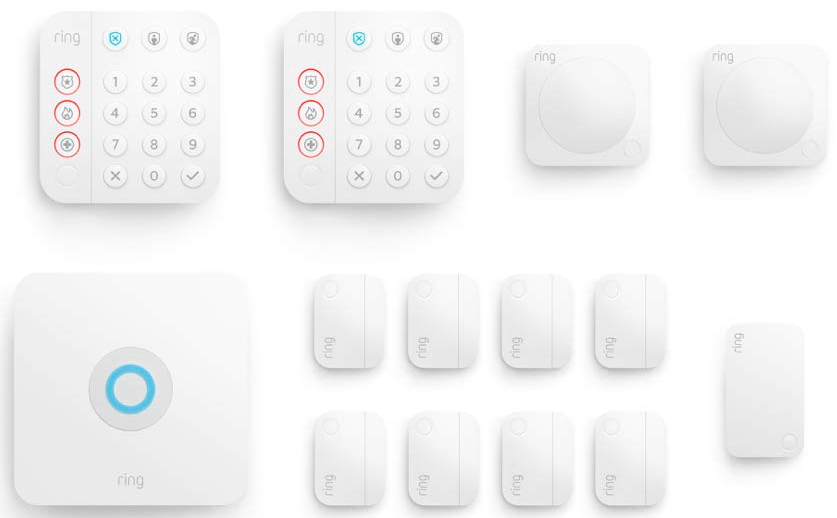


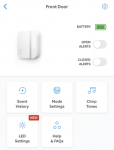
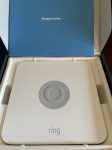

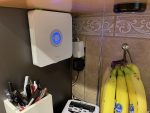
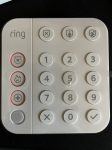
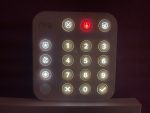
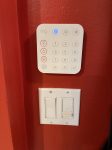
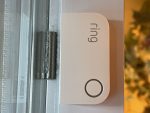
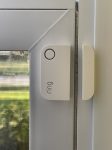
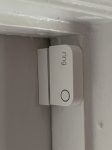
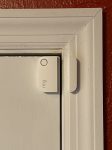
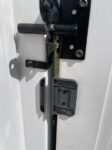
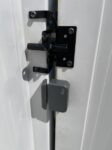

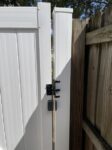
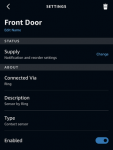




I guess those monthly “system health” e-mails I was getting from ADT are a joke. How can my system be “communicating with ADT” when I turned everything off almost a month ago? So glad I’m no longer a customer of this company …
Had my first internet outage (Spectrum scheduled maintenance) and the Ring base station switched to cellular as expected.
Had another odd alarm event. We set the alarm to “away” and then left for a walk. We barely got around the corner on our street when both of our phones started going off that Ring was alarming. I disarmed it (and the acknowledged the call) then tried to figure out what had caused the alarm. It turned out that one of the motion sensors was stuck in a “motion detected” state, but the system ignores this when arming. But once the exit delay was done, the system thought there was motion detected and set off the alarm.
When we got home, I tried pressing the button on the front of the motion sensor but that just gave me a red flash of the LED. Using test mode from the app, however, I was able to “unstick” it and it started working normally again. That’s the first time I’ve had that happen.
this is a problem I’ve run into – version 2 ring alarm here – I think it has to do with z-wave range and reception – the ring motion sensors get “stuck” somehow in detected motion and I’ve had false alarms when range issues occur. Oddly enough I had this problem when pairing z-wave devices with a hometroller PI – so z-wave interference is a problem for the ring motion sensors. Also I’ve seen this happen with pairing new devices to the ring alarm hub and if motion is detected during the pairing process.
Hopefully they’ll come up with a fix or new version. For now avoiding z-wave range issues seems to have helped. In that regard, I found the leviton z-wave plugs work better as range extenders than ring’s own range extenders.
For now I’ve got events in HomeSeer that check (via virtual devices) if a motion sensor has been “stuck” in detecting motion for more than 15 minutes (when Ring is armed) and sends me an alert so I can fix it. This hasn’t happened again in a while, though.
I do seem to have Z-Wave range issues with my keypad though. It’s in the foyer, and only about 20 feet away from the base station (with a half wall in-between) and yet sometimes it takes multiple attempts to enter the code when disarming before it finally disarms the system.
Heh:
ADT and Ring reach settlement in trademark dispute over octagonal blue signs
“Ring claims the keypad will run for about 7 months on a single charge based on usage.”
I just had to charge my one keypad for the first time since I installed it back in February, so it appears this claim is accurate. 🙂
I saw this headline today (Ring Alarm professional monitoring is about to become a lot more expensive) and was like, ugh, great! It figures that just months after I leave ADT for Ring’s super-affordable $10/month professional monitoring, there’s a big rate increase. It’s doubling in fact, to $20/month!
But reading a little more, the Ring Protect Plus plan will remain at $10/month for existing subscribers through 2025 and then will be switched to the Ring Protect Pro plan at the higher monthly rate. So at least I’ve got some time before that happens.
The Ring Protect Pro plan comes along with new hardware that incorporates Eero mesh wireless, local video storage, and even a Zigbee radio in addition to Z-Wave, which I guess is the justification for the higher monthly cost.
Added a section on the outdoor sensors.